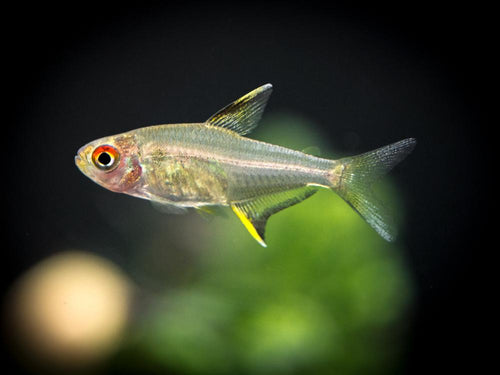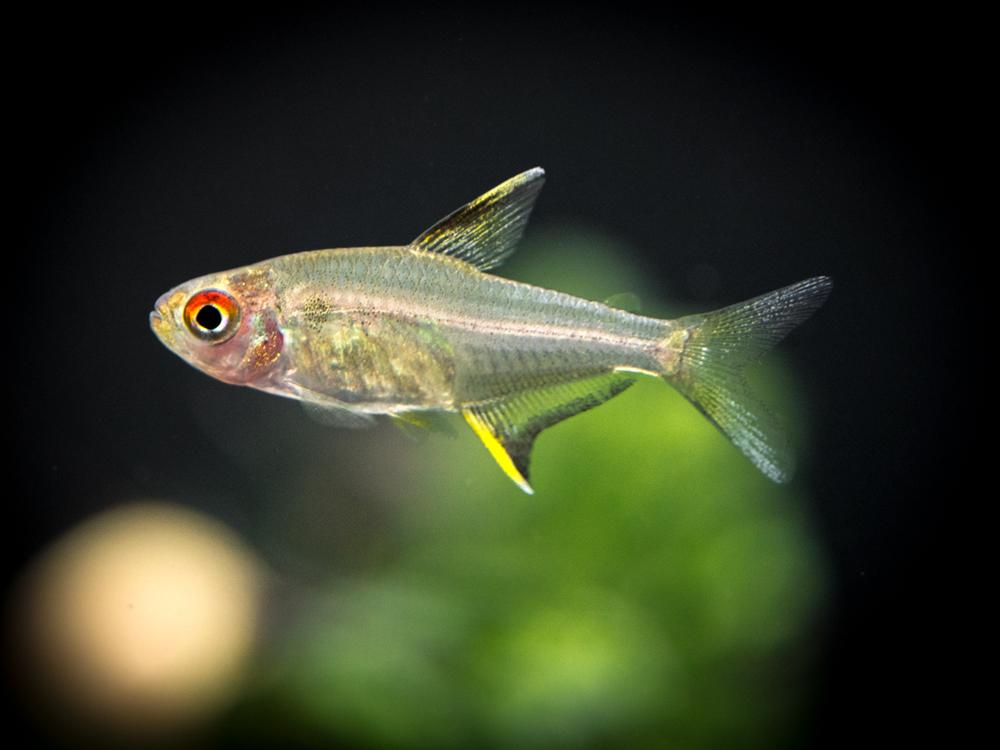Tetra-Lemon
Tetra-Lemon
check_circle Fast Shipping
check_circle Quality Products
check_circle Affordable Price
Reach out to us on ''available to order'' items via WhatsApp or email
Out of stock
Couldn't load pickup availability

Tetra-Lemon
package_2
Product Description
Product Description
All our fish, shrimp and corals are bagged with fresh oxygen as well as a heat pack in winter.
When ordering livestock please select the box size and add it to your cart for accurate overnight (1-2 days) shipping costs. A small box can take 1-2 bags and a medium box 6 bags. One bag fits max 10 small (1-3cm) fish or max 2 medium (3-5cm) fish or max 1 large (>5cm) fish.
ONE SPECIES PER BAG. Eg: One bag of 10 neon tetra
Lemon tetras are a lovely freshwater fish that can add a special pinch of colour to any aquarium. They’re also quite active and easy to care for.
But for whatever reason, this species is often underrated in the fishkeeping community. We can’t figure it out, because not only do we love them, we know a bunch of other owners who do as well.
If you’re thinking about giving this species a chance, read on to learn everything you need to know about lemon tetra care. You’ll learn about their diet, size, tank mates, behavior, and more!
Species Summary
The lemon tetra (scientific name: Hyphessobrycon pulchripinnis) is a small freshwater fish that can create a big visual impact in your tank. First introduced to the pet trade in the 1930s, these fish are a staple among enthusiasts.
Readily available and affordably priced, they’re a good choice for seasoned aquarists and novices alike.
Lemon tetras are native to South America and inhabit parts of the Amazon River. Most often, they can be found dwelling in narrow streams around the Tapajós River basin in Brazil.
A peaceful and hardy fish, the lemon tetra is one of the easier freshwater species to care for. These fish make great additions to community tanks and can thrive in large groups.
Appearance
The appearance of the lemon tetra is both familiar and distinct! They have a similar diamond-shaped body like many other types of tetra species. However, lemons tend to be deeper-bodied and more laterally compressed.
Most of the body is semi-transparent. In most specimens, the scales have a pearlescent finish that shines in the light.
The caudal fin is transparent and glass-like. Upon closer inspection, you might see a fine black line around the perimeter of the fin that offers more definition. A similar appearance is found on the pectoral fins.
The dorsal and anal fins are where the fish’s vibrancy is most noticeable! Lemon tetras sport a triangular dorsal fin that’s semi-transparent. Splashes of yellow and black cover the fin and add a touch of colour!
Meanwhile, the pointed anal fin is bolder. The front portion of the fin is bright yellow, but a black line borders the rest. In females, this line is pencil-thin. But for males, the black border is thick and prominent.

The appearance of the anal fin is one of the most reliable sexing methods for this fish. Females are usually deeper-bodied, have a compressed dorsal fin, and duller colouration.
Other notable physical characteristics include the presence of an adipose fin and the colour of the eyes. The adipose fin is very small. It’s located just before the base of the caudal fin. For most lemon tetras, it’s black and yellow.
Author Note: The eyes of the lemon tetra don’t match the body at all, which makes them stand out! The upper half of the iris is bright red, which deepens and dulls based on the fish’s health.
Lifespan
The average lemon tetra size is somewhere between four and eight years when healthy. While there are plenty of instances when these fish have outlived their expected lifespan, it’s usually a mix of good care and luck.
Like any other fish species, the lemon tetra’s lifespan can suffer dramatically without proper care. In a poorly maintained habitat, these fish can experience stress, disease, and early death.
Average Size
The typical size of a lemon tetra is around 5cm in length when fully grown. These fish are quite small, making them convenient no matter how much room you have for them.
Lemon Tetra Care
Lemon tetra care is something that we can wholeheartedly recommend to beginners. If you’re looking for a fish species that thrive in captivity, look no further. These gorgeous creatures are hardy and can adapt to a relatively wide range of conditions.
Of course, lemon tetras do have their preferences and certain conditions that are optimal for their health. To help your new fish reach their full potential in your tank, stick to the care guidelines below.
Tank Size
The first thing to consider is the size of your tank. As a small species, you don’t need a massive tank when keeping lemon tetras. However, these fish are very active and require ample space to swim and play.
We recommend starting with a tank size of 75L or more. A 75L tank is sufficient for a small group of six lemon tetras.
Water Parameters
As always, the best way to keep your lemon tetra healthy is to mimic their natural environment. Fortunately, that shouldn’t be a problem with this species.
These fish come from shallow streams with soft and clean water. While many species from the Amazon require tannin-infused habitats, that’s not the case with lemon tetras. They can do just fine in clear, dechlorinated water.
Overall, lemon tetras are hardy enough to tolerate a generous range of conditions. It’s always good to aim for the middle of these ranges to ensure that there’s some comfortable wiggle room for your fish!
- Water temperature: 22°F to 28°F
- pH levels: 5.5 to 8.0 (neutral leaning slightly toward acidic is best)
- Water hardness: 3 to 20 dGH
To make sure these water parameters stay consistent, you should invest in a water test kit that you can trust. The ability to get quick and accurate readings is a must for any aquarist, and will allow you to make adjustments to the water when needed (before your fish suffer).
What To Put Inside Their Tank
These vibrant freshwater fish helm from densely planted waters in the Amazon. That means a barren and boring tank will not do.
Aim to create an Amazon biotope. Start with a layer of a fine sand substrate. Then, add driftwood and roots to mimic South American riverbeds.
Once the substrate settles, add a wide variety of live plants. Mix up plant species to achieve a natural forest feel. Utilize ground-cover plants, taller stem plants, and floating plants.
The plants should offer plenty of protection from the light. However, the aquarium should still have ample open space in the middle for swimming. In a densely planted aquarium, these fish can develop rich colours that stand out amongst the greenery!

Standard filtration systems and lighting will do. Use the outlet of your filter to create moderate water flow in the tank. You can also implement bubble stones for better aeration. Though, they are not necessary if you have a traditional filter.


